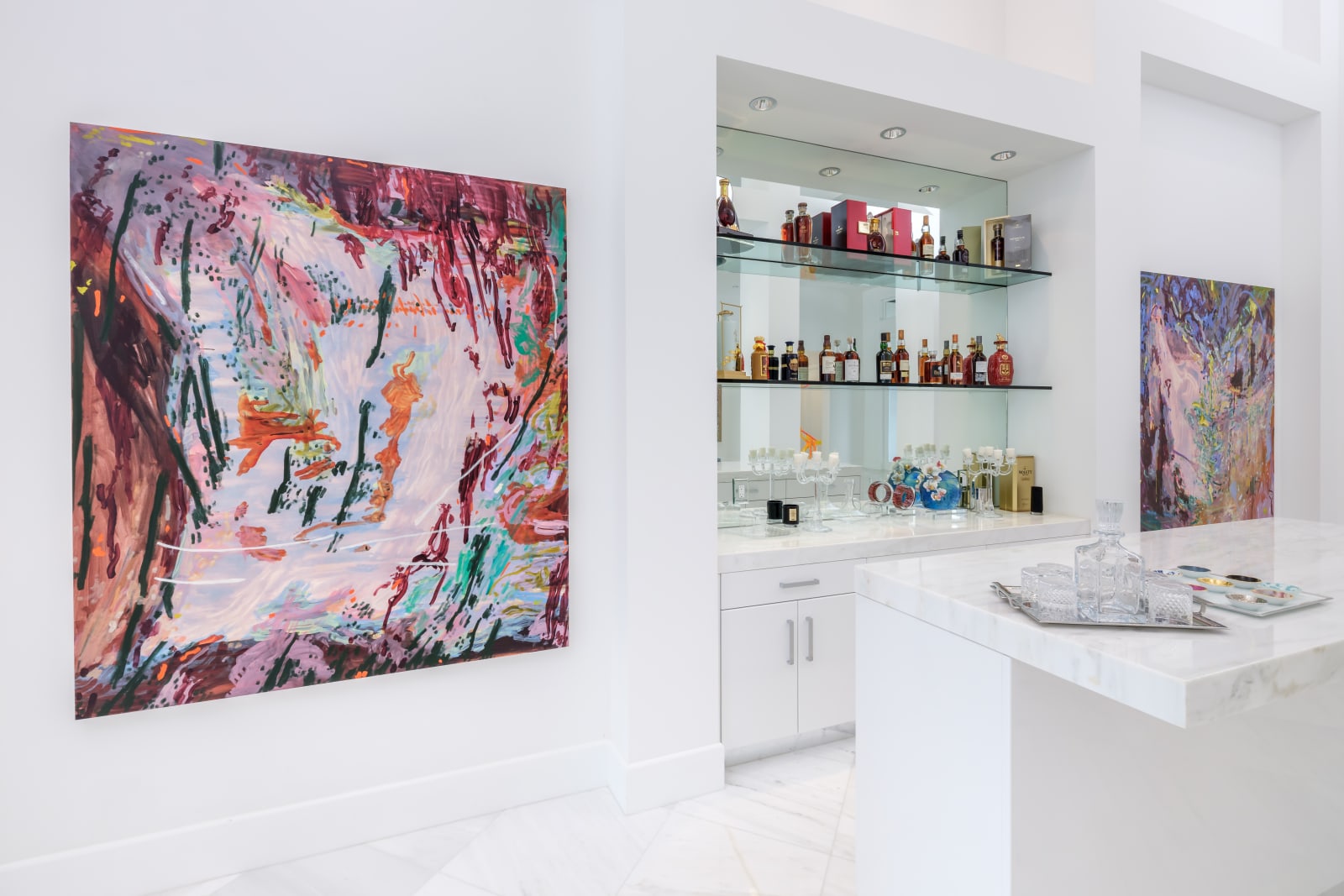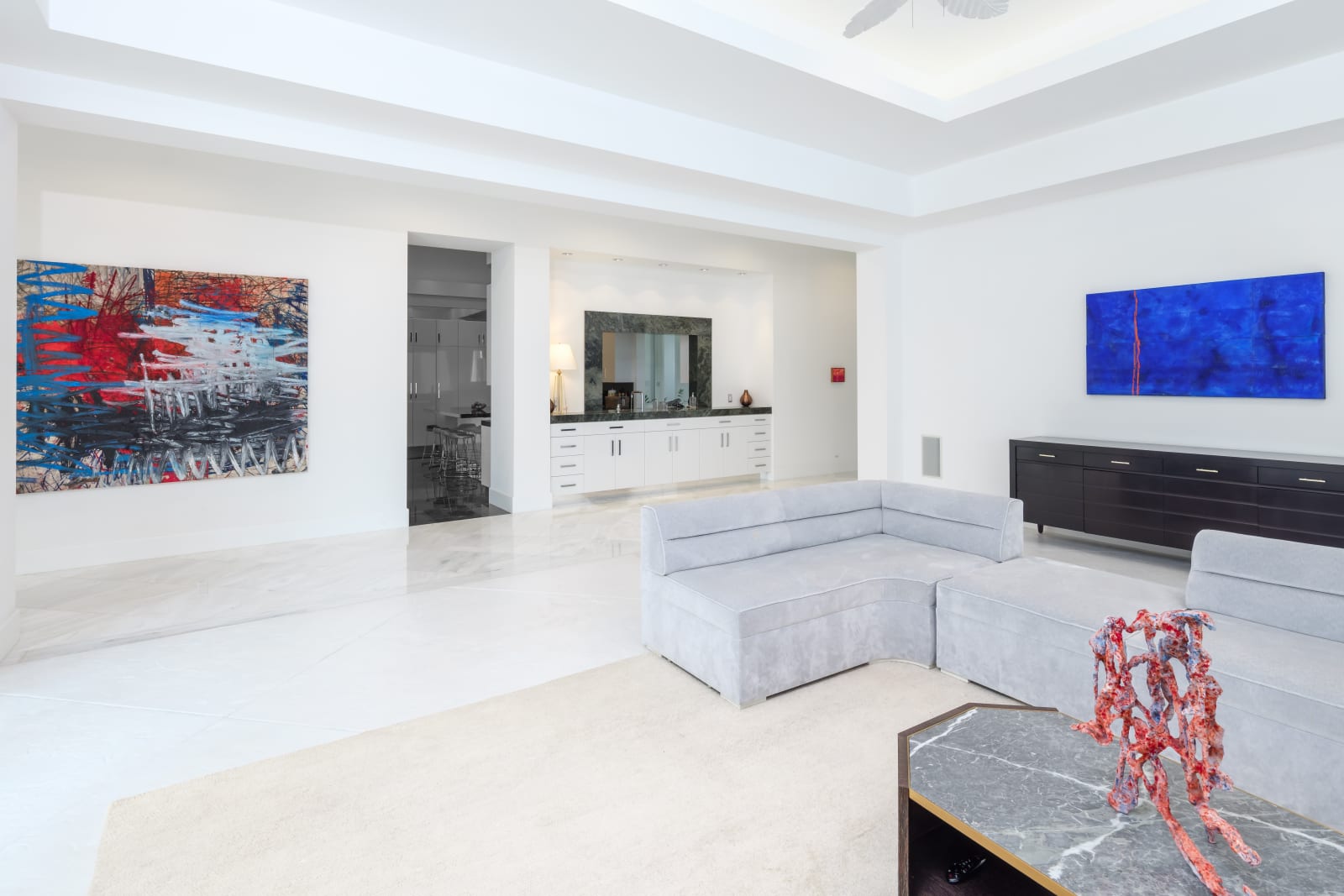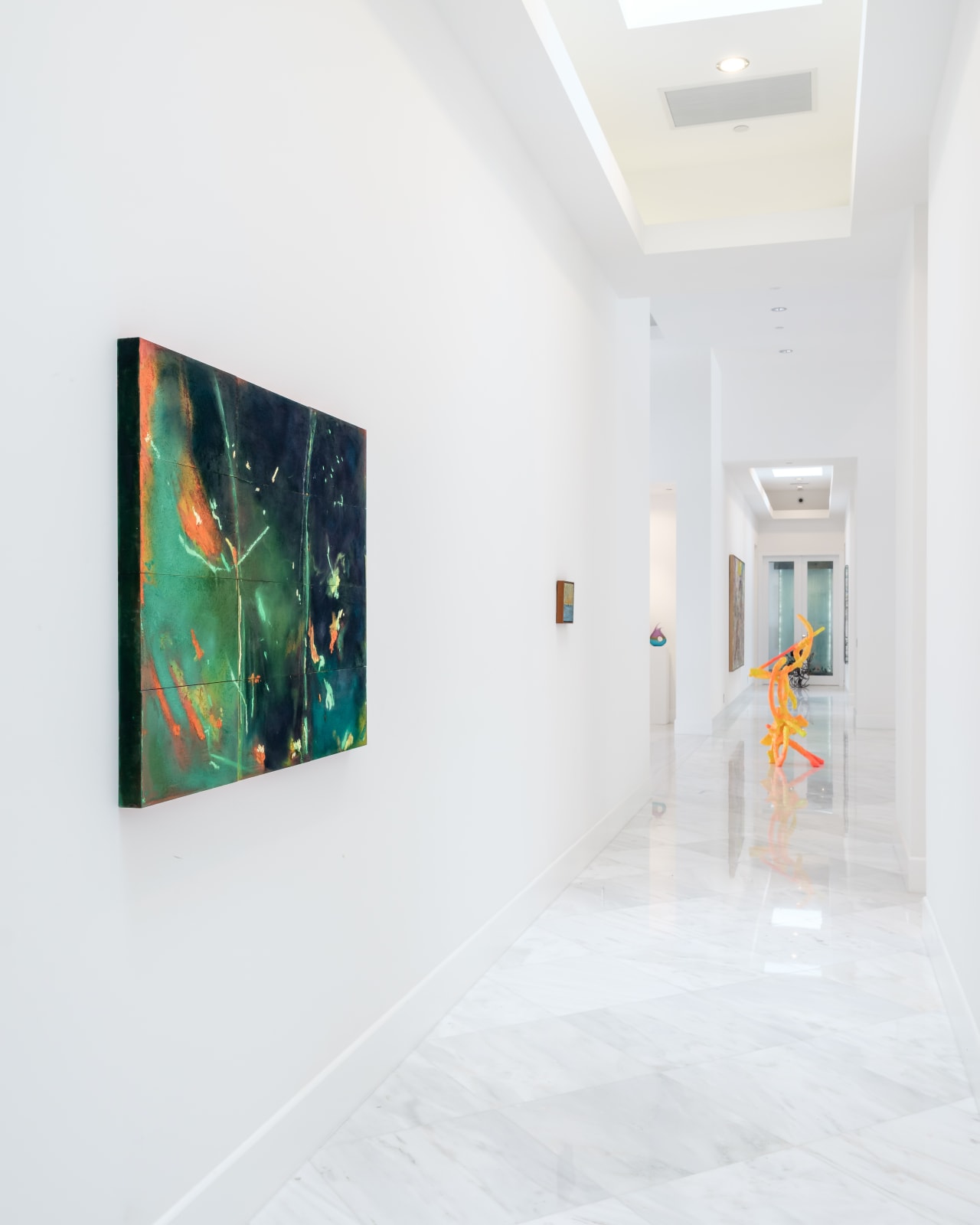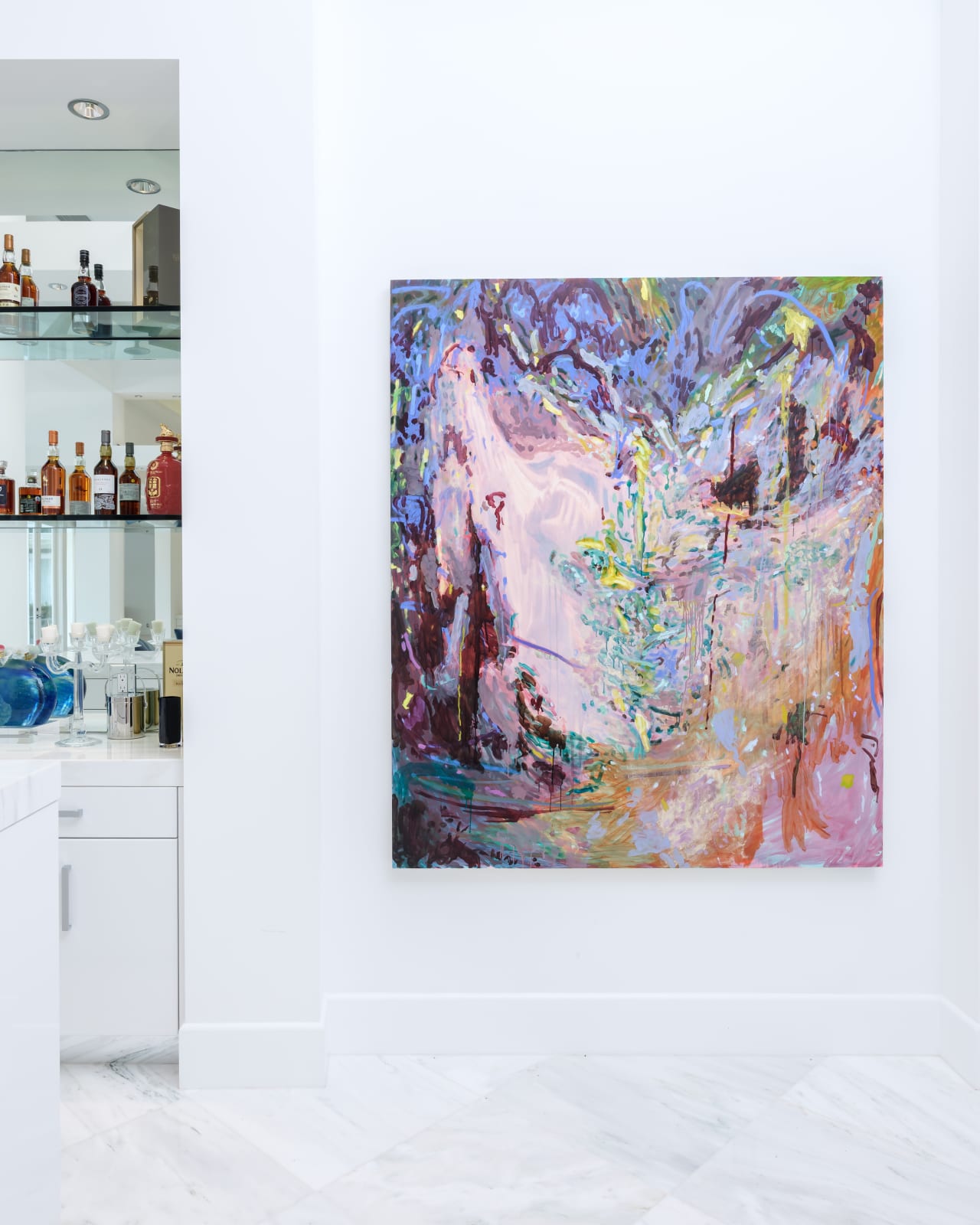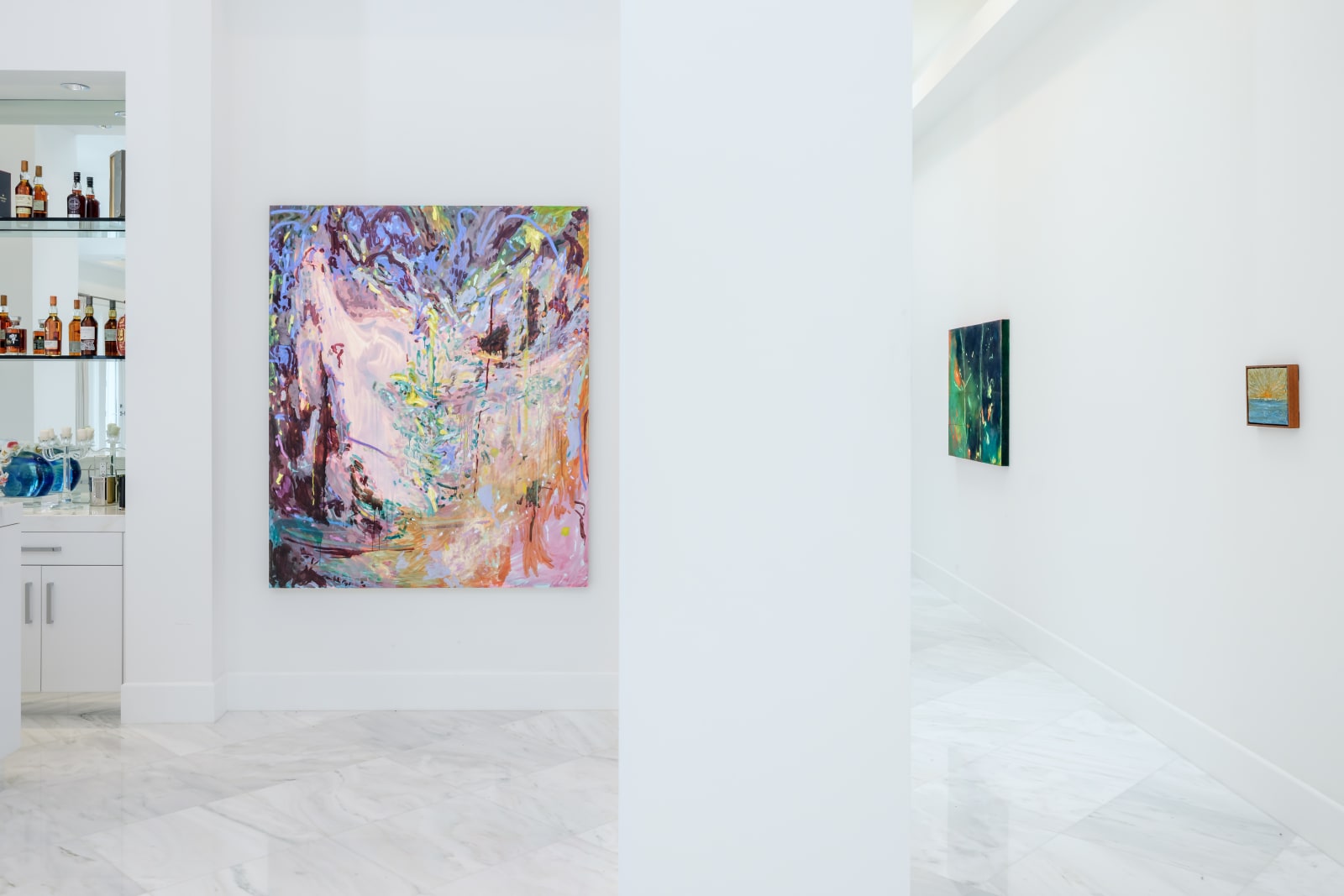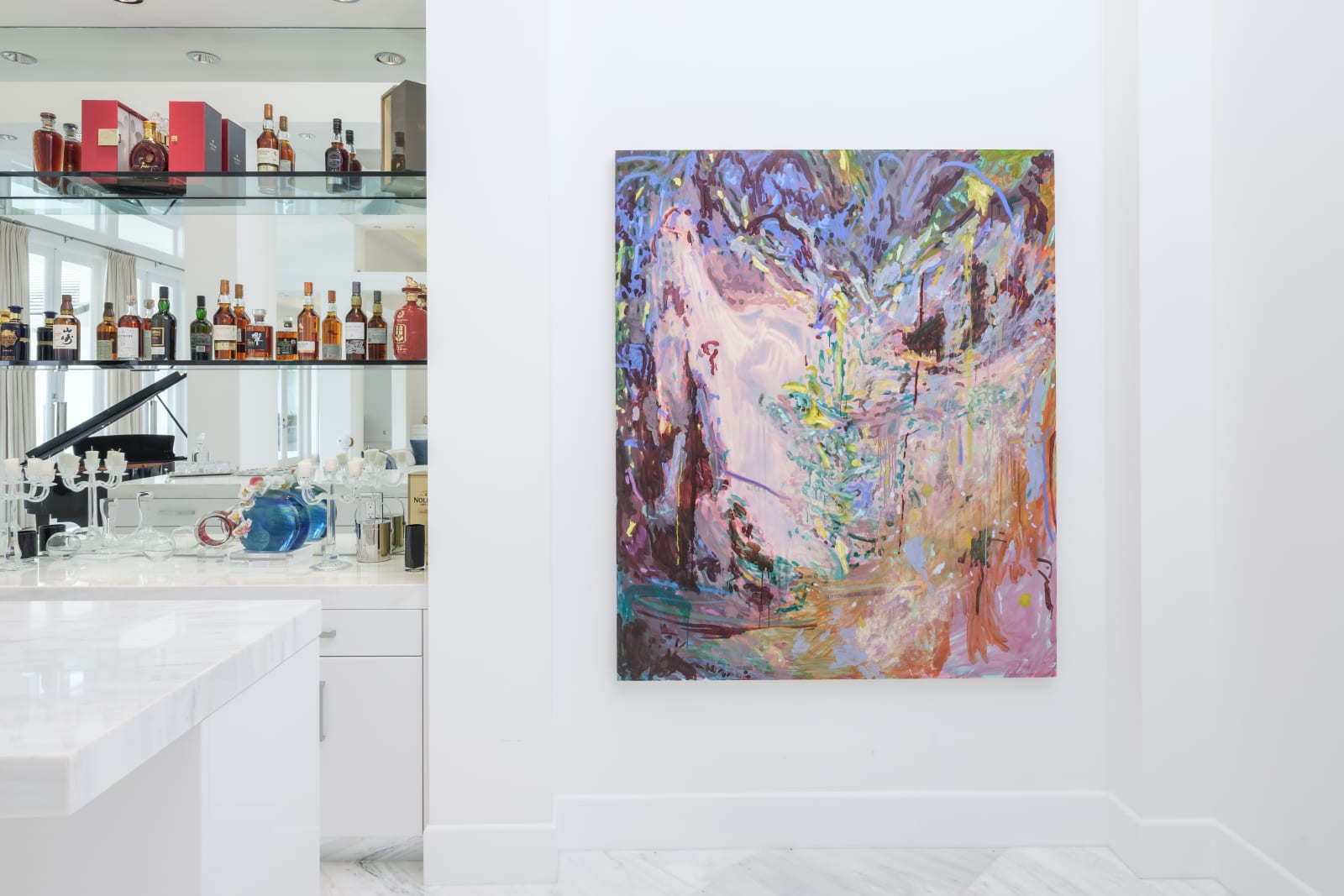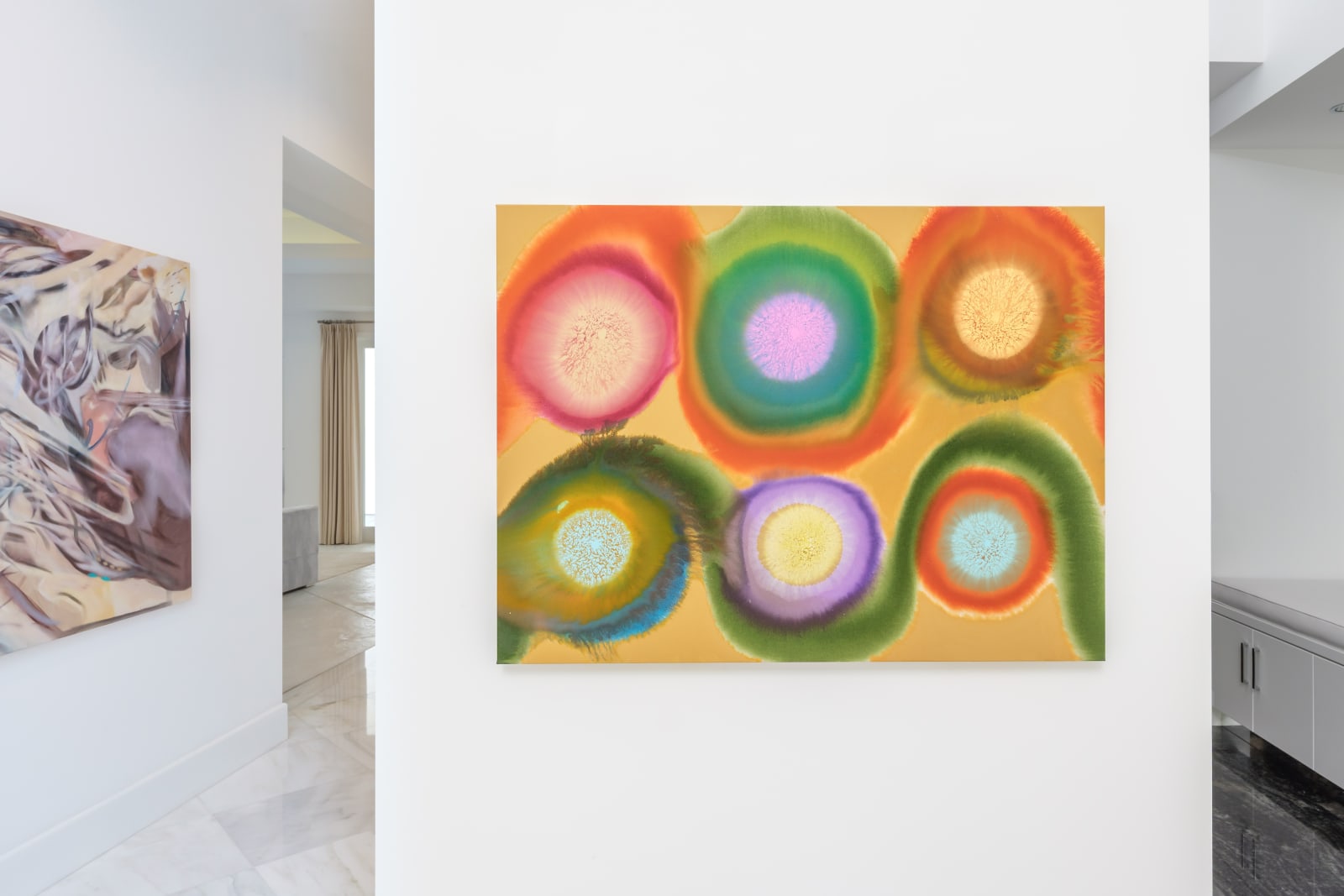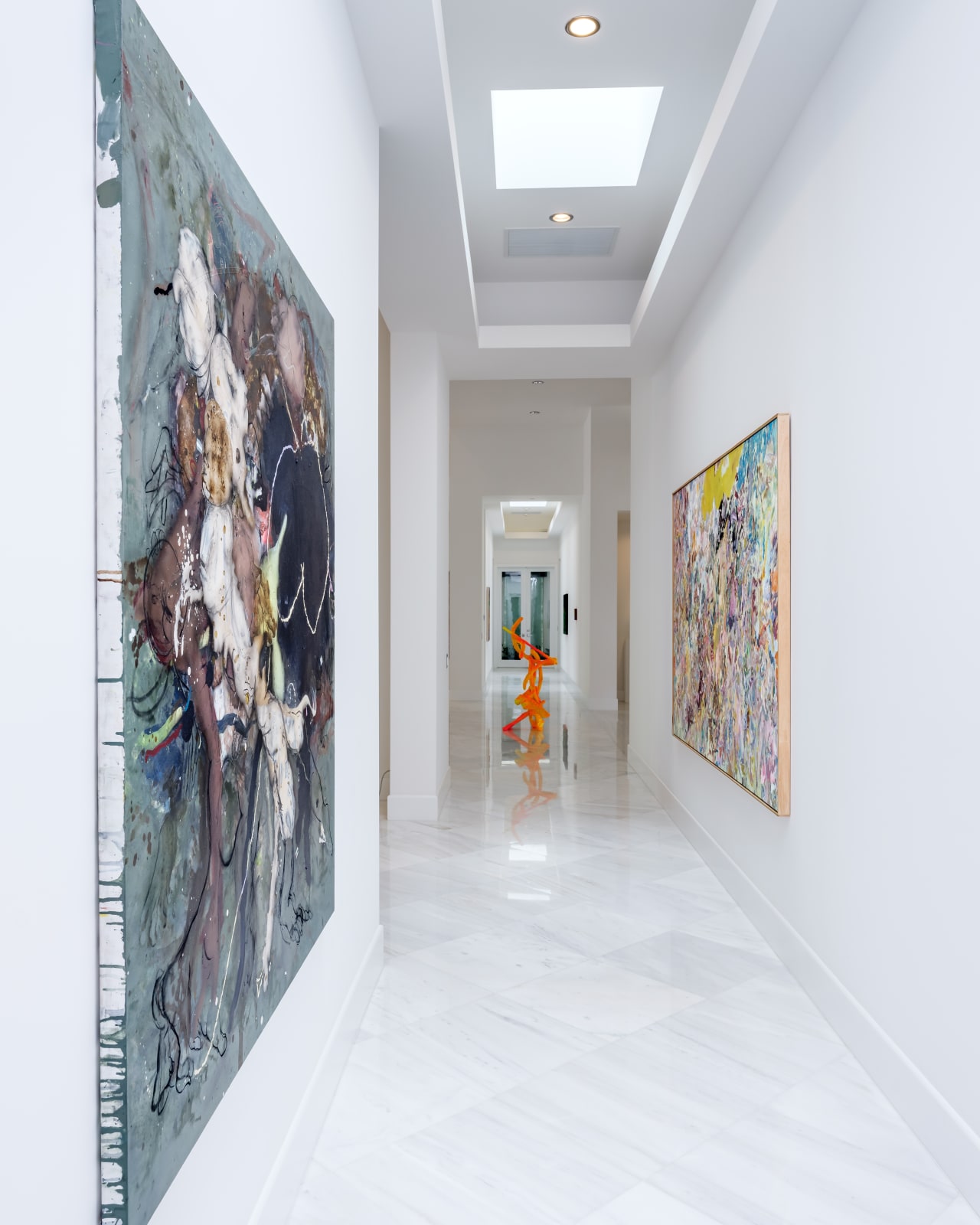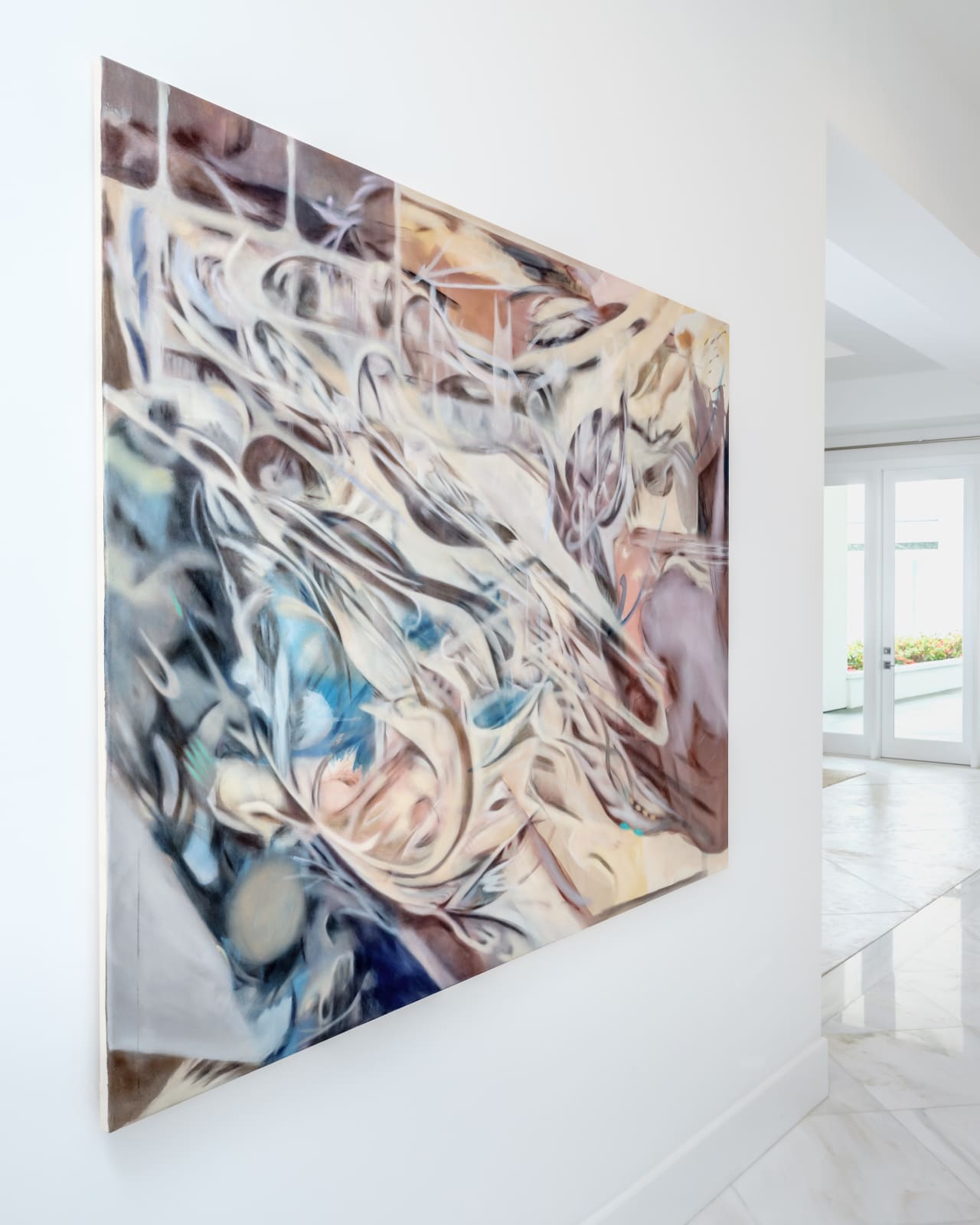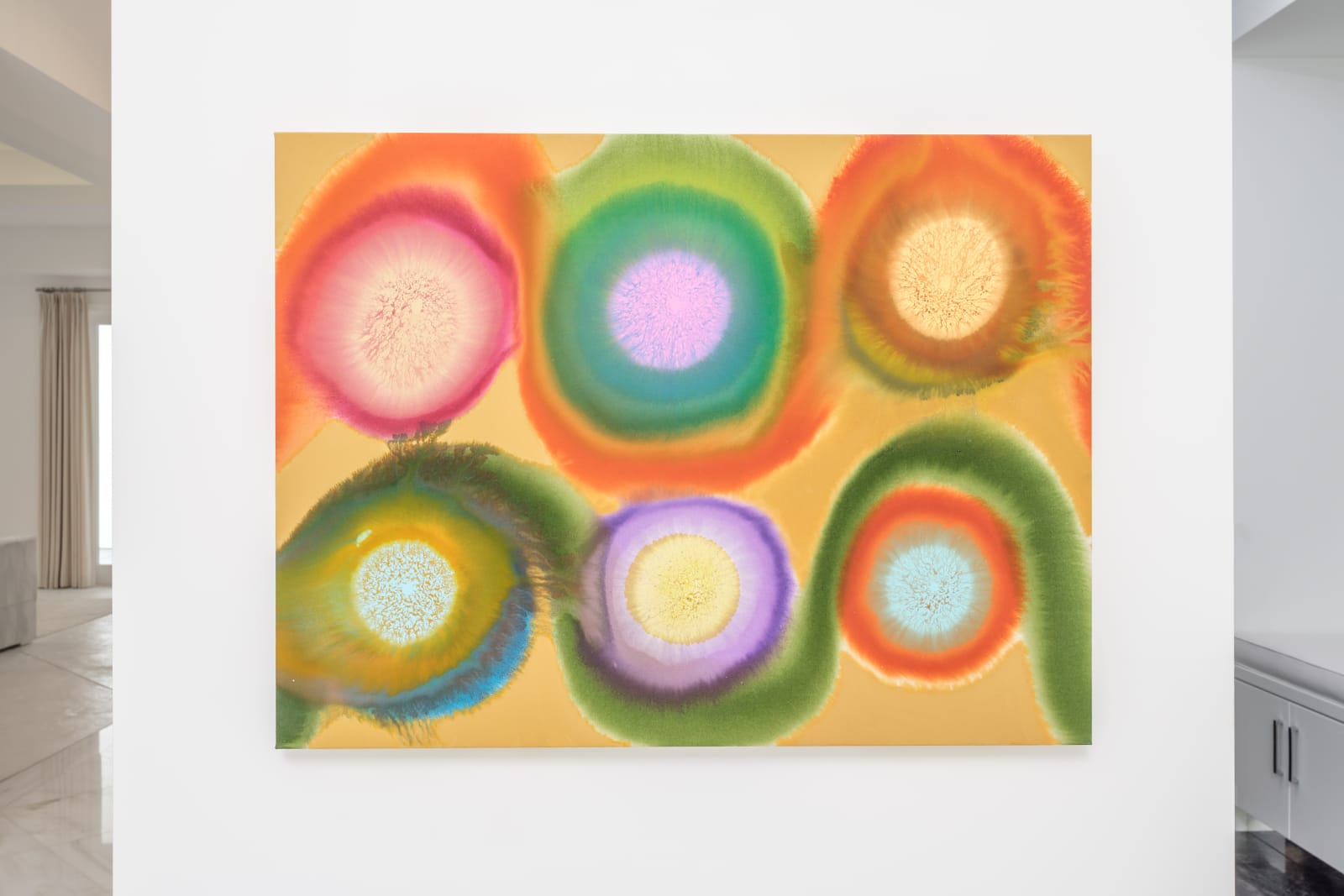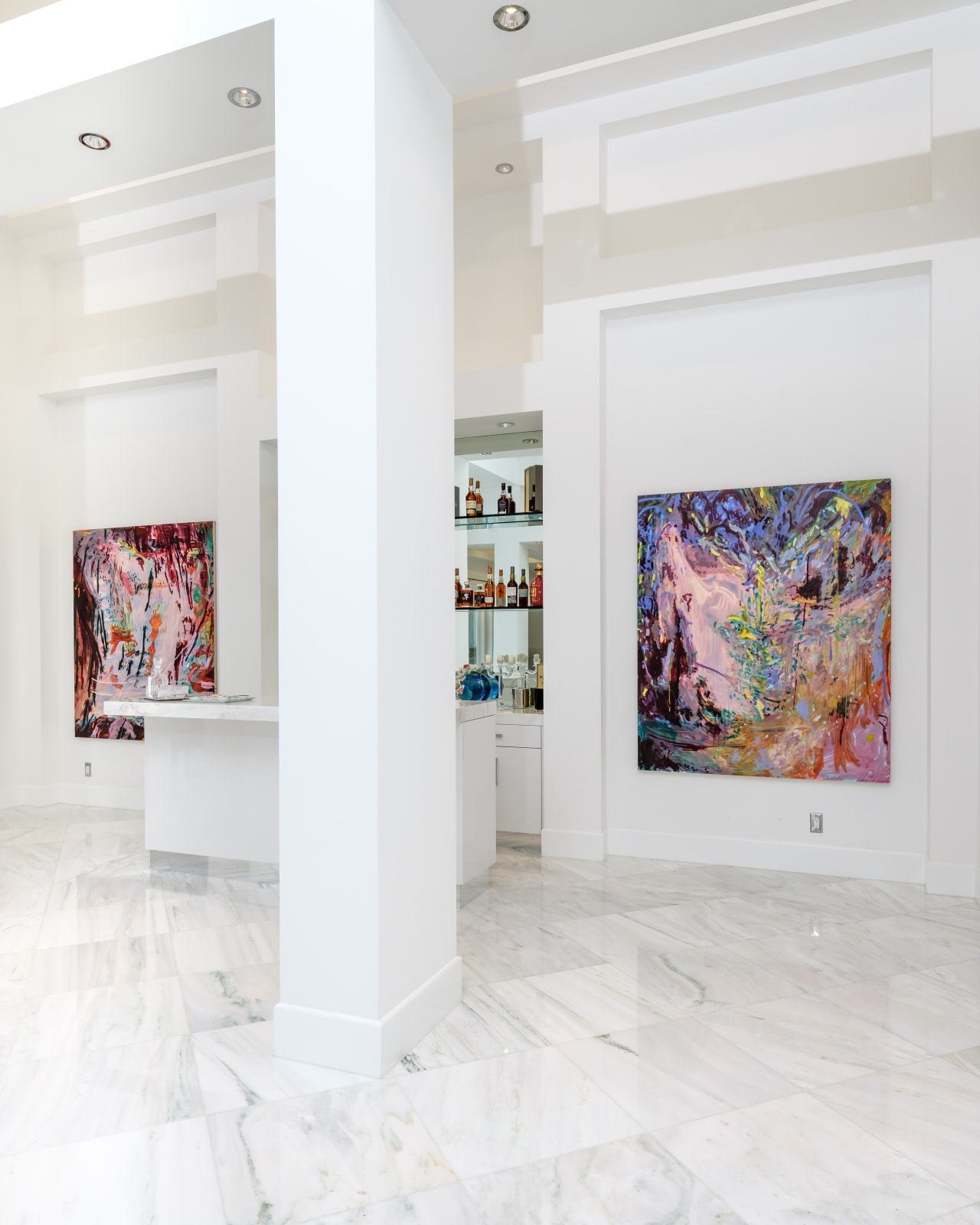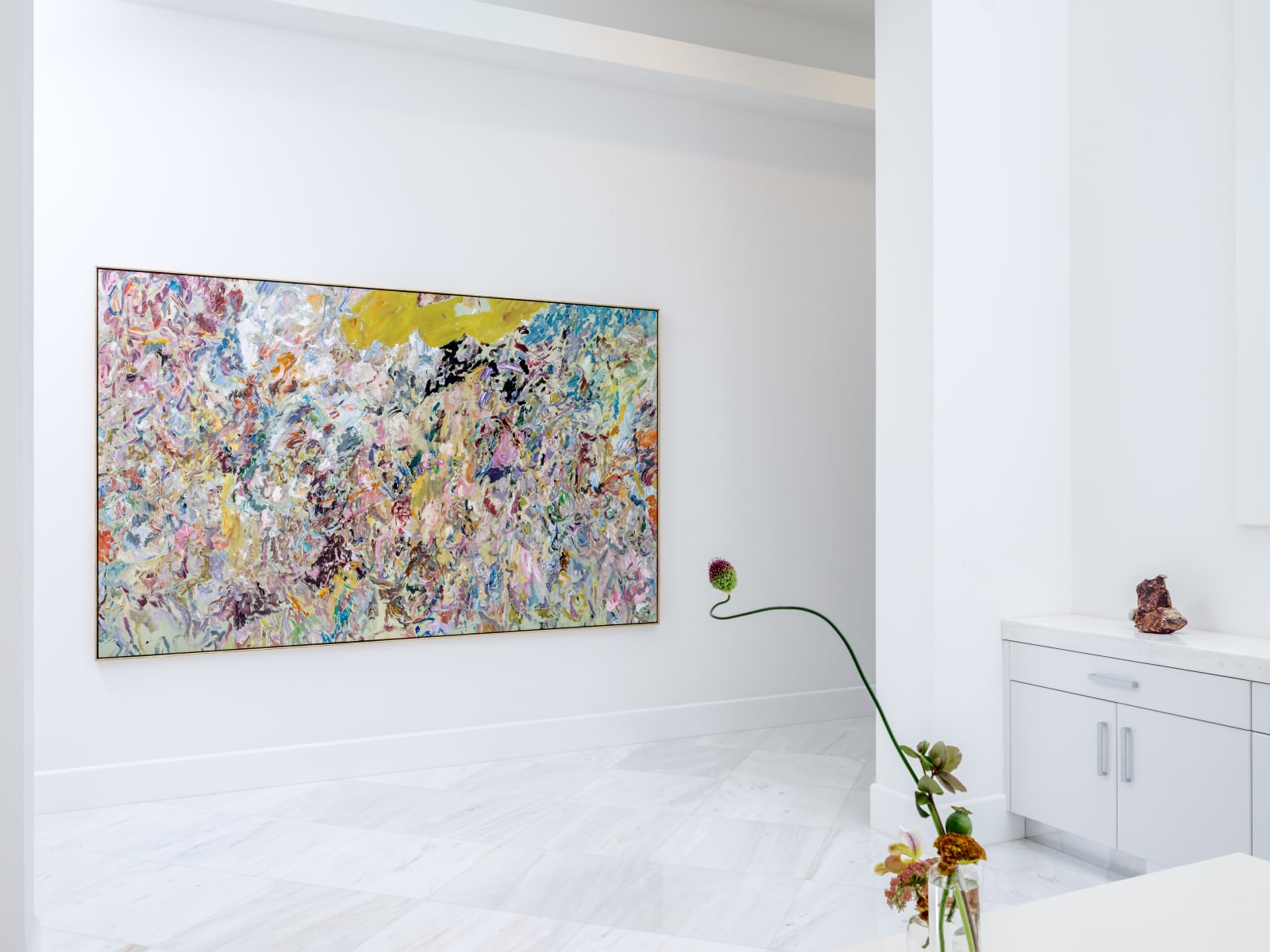Make Room and Meeting Points Projects are pleased to present Beyond the Surface, a group exhibition featuring sixteen artists installed within a private residence in Laguna Niguel, California. Departing from the neutrality of the white-cube gallery model, this domestic setting offers a contextually rich environment in which to consider abstraction as a living, embodied practice.
The exhibition brings together intergenerational and cross-cultural perspectives on abstraction, foregrounding how contemporary artists continue to engage the visual language of non-representational art while reconfiguring its formal and conceptual boundaries. While rooted in the aesthetic and philosophical legacies of mid-century abstraction—particularly Abstract Expressionism’s privileging of gesture, spontaneity, and process—these practices have evolved in dialogue with a vastly expanded field of cultural reference, political consciousness, and material inquiry.
As Stella Paul has noted of the Abstract Expressionists, their works “[resisted] stylistic categorization” and emphasized either “dynamic, energetic gesture” or “a reflective, cerebral focus on more open fields of color.” Today, artists working within and beyond that lineage engage abstraction not as a fixed style or ideology, but as an adaptable grammar—one that accommodates the complexities of contemporary subjectivity, diasporic memory, and transnational exchange. Abstraction becomes less a formalist end than a porous medium through which individual and collective histories are negotiated.
This exhibition posits that abstraction can function as a site of sensory resistance against the disembodiment of the digital age. The works in Beyond the Surface emphasize texture, scale, and material presence—qualities that demand corporeal proximity and sustained attention. Installed in a space shaped by daily life, the exhibition challenges the viewer to encounter painting not only as image, but as object, surface, and gesture imbued with psychic and emotional charge.
Several thematic currents structure the exhibition. These include formal experimentation through material process (Larry Poons, Linn Meyers); investigations of corporeality and the body (Erica Mahinay); abstraction as a therapeutic or reparative mode in response to trauma, displacement, and social rupture (Daisy Parris, Adriane Nieves, Oscar Murillo); and a meditative engagement with time, decay, and impermanence (Pia Ortuno, Woojung Ghil, Oscar Murillo). These frameworks are not prescriptive but porous, reflecting abstraction’s capacity to accommodate contradiction, multiplicity, and affective intensity.
Ultimately, Beyond the Surface argues for an understanding of abstraction not as a monolithic tradition, but as a generative and evolving field—one that continues to be reshaped by artists who work both within and against its historical constraints. These practices are attuned to the personal as much as the political, and in their refusal to resolve into singular meaning, they create space for reflection, resonance, an


